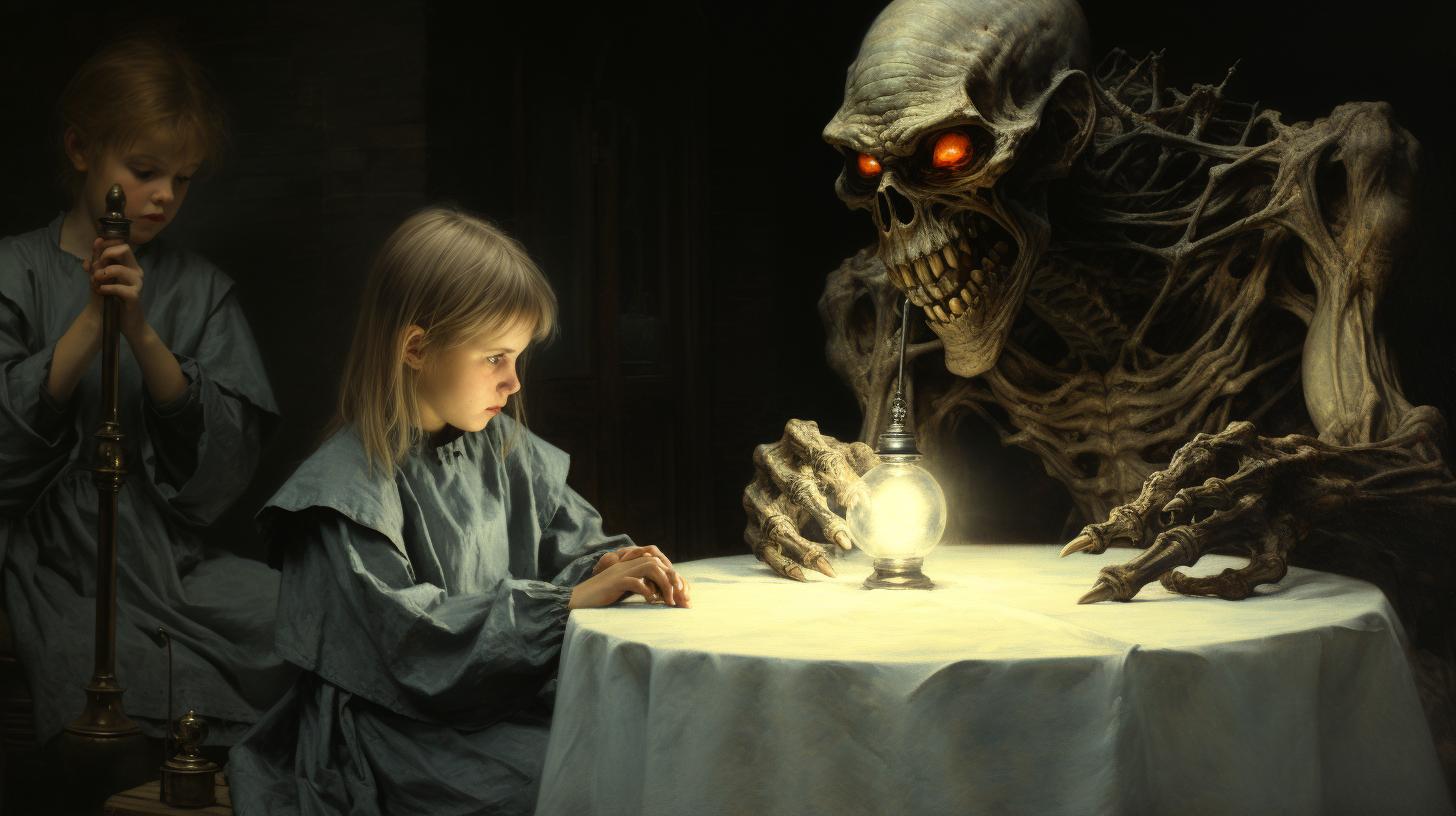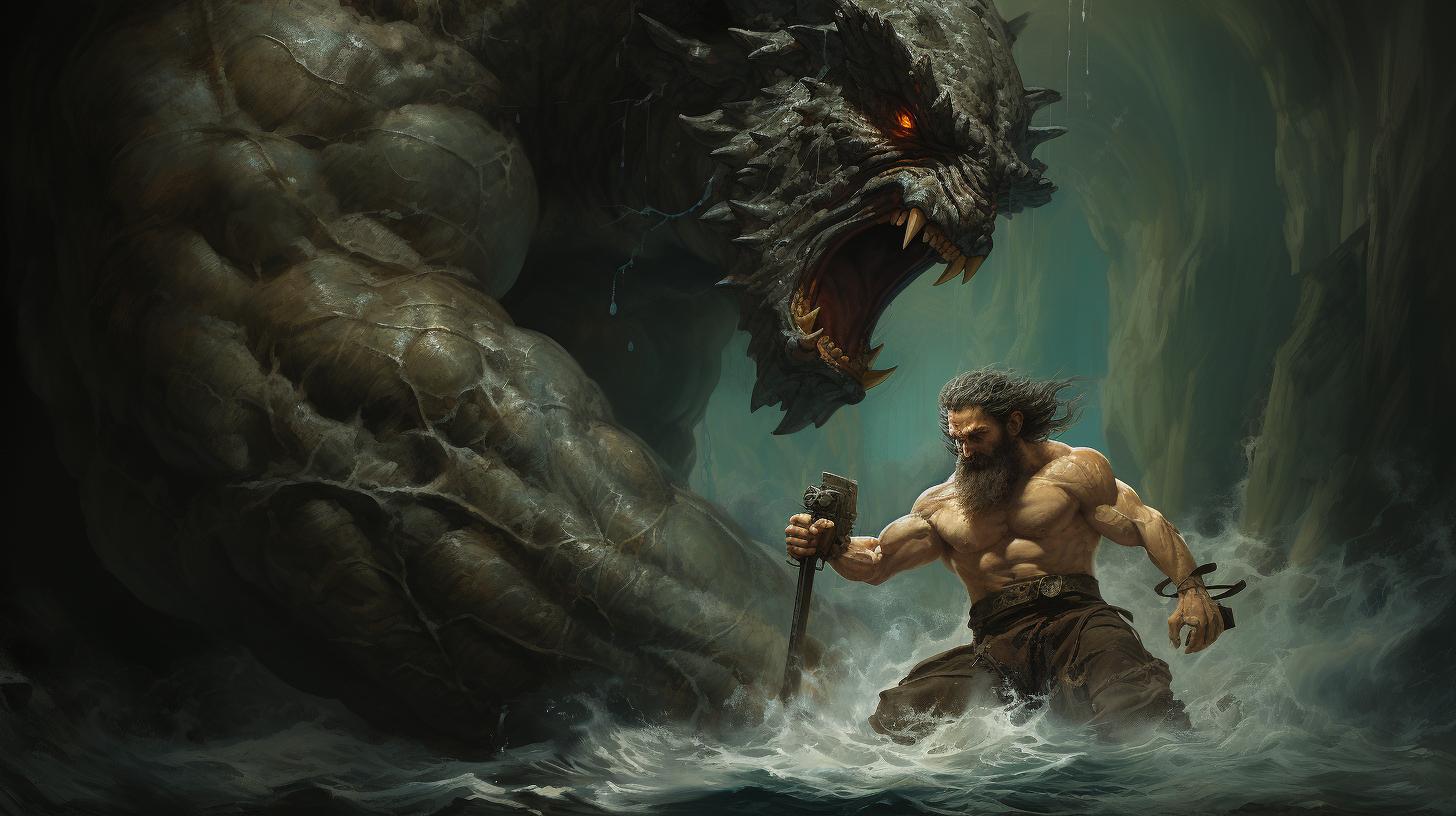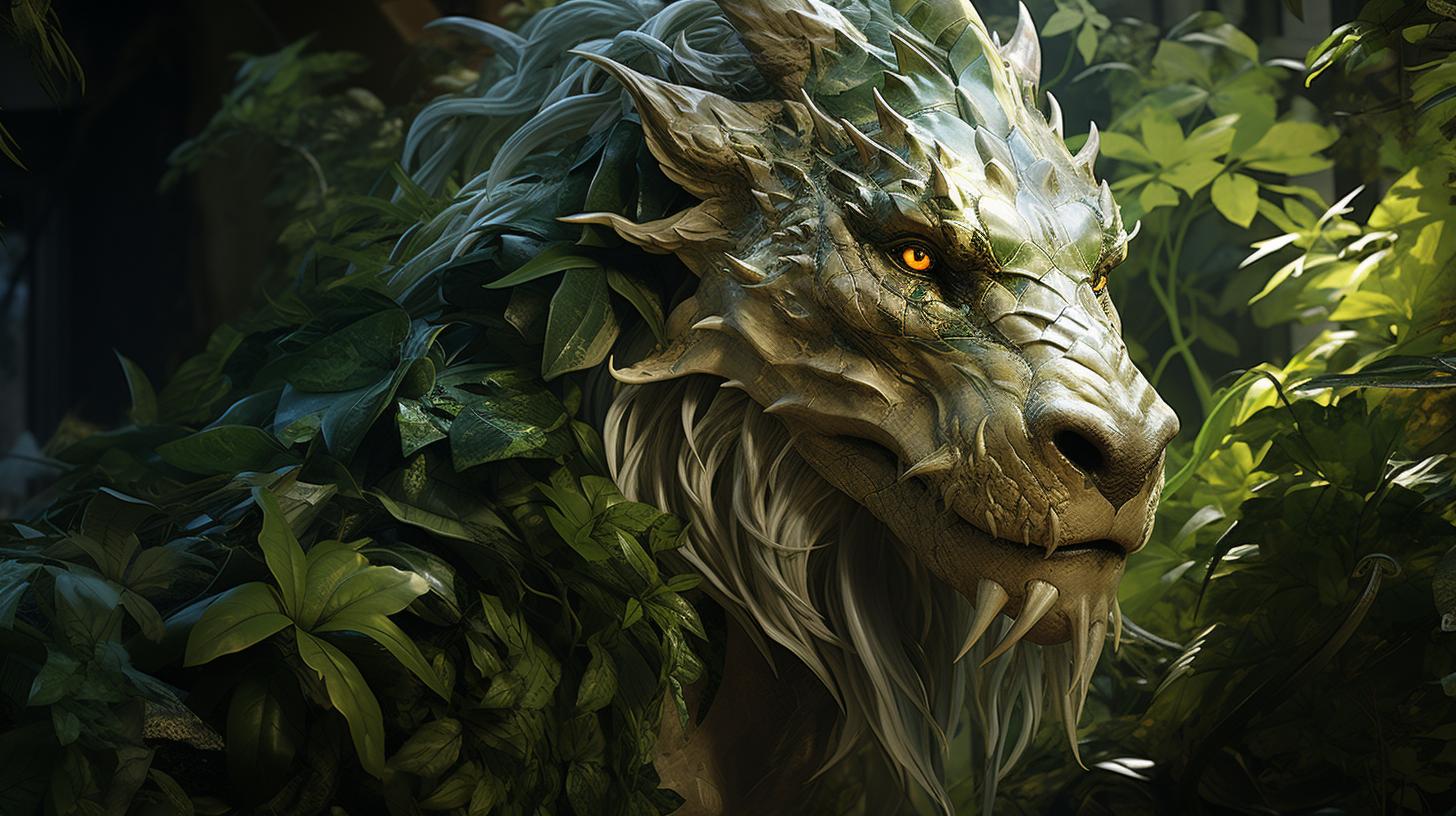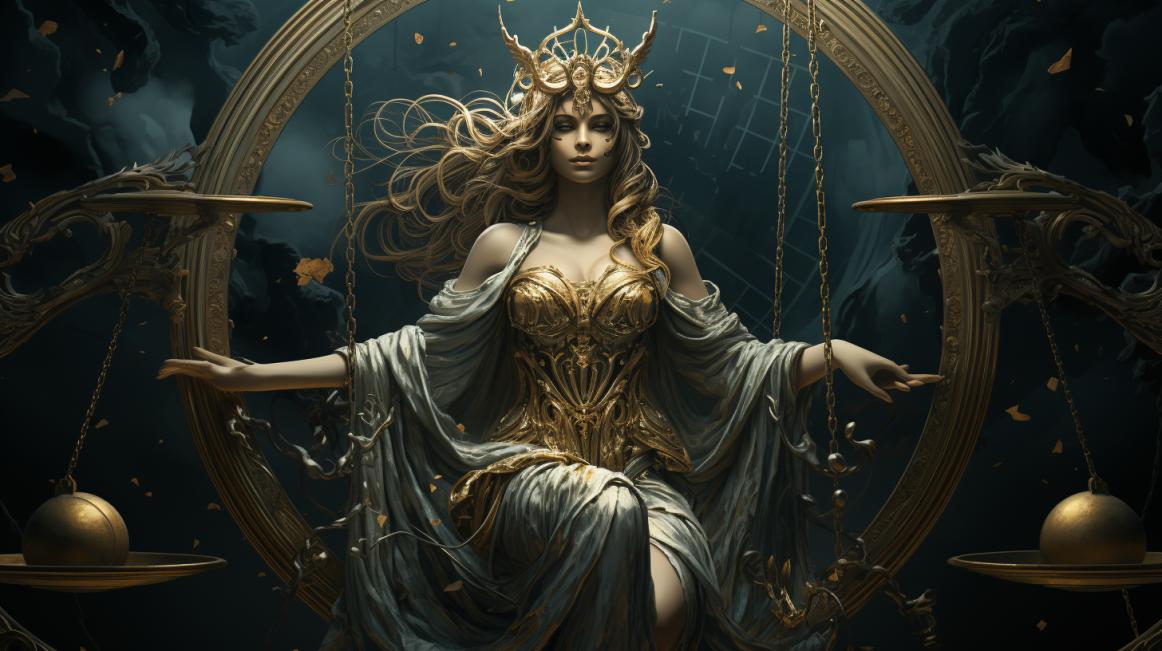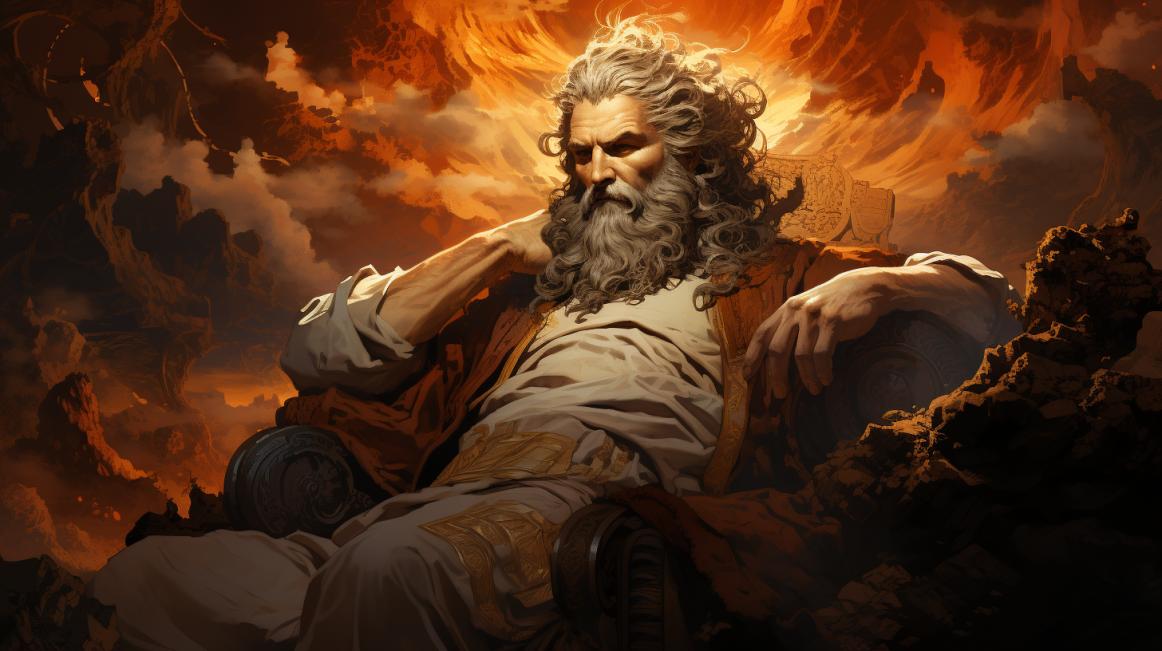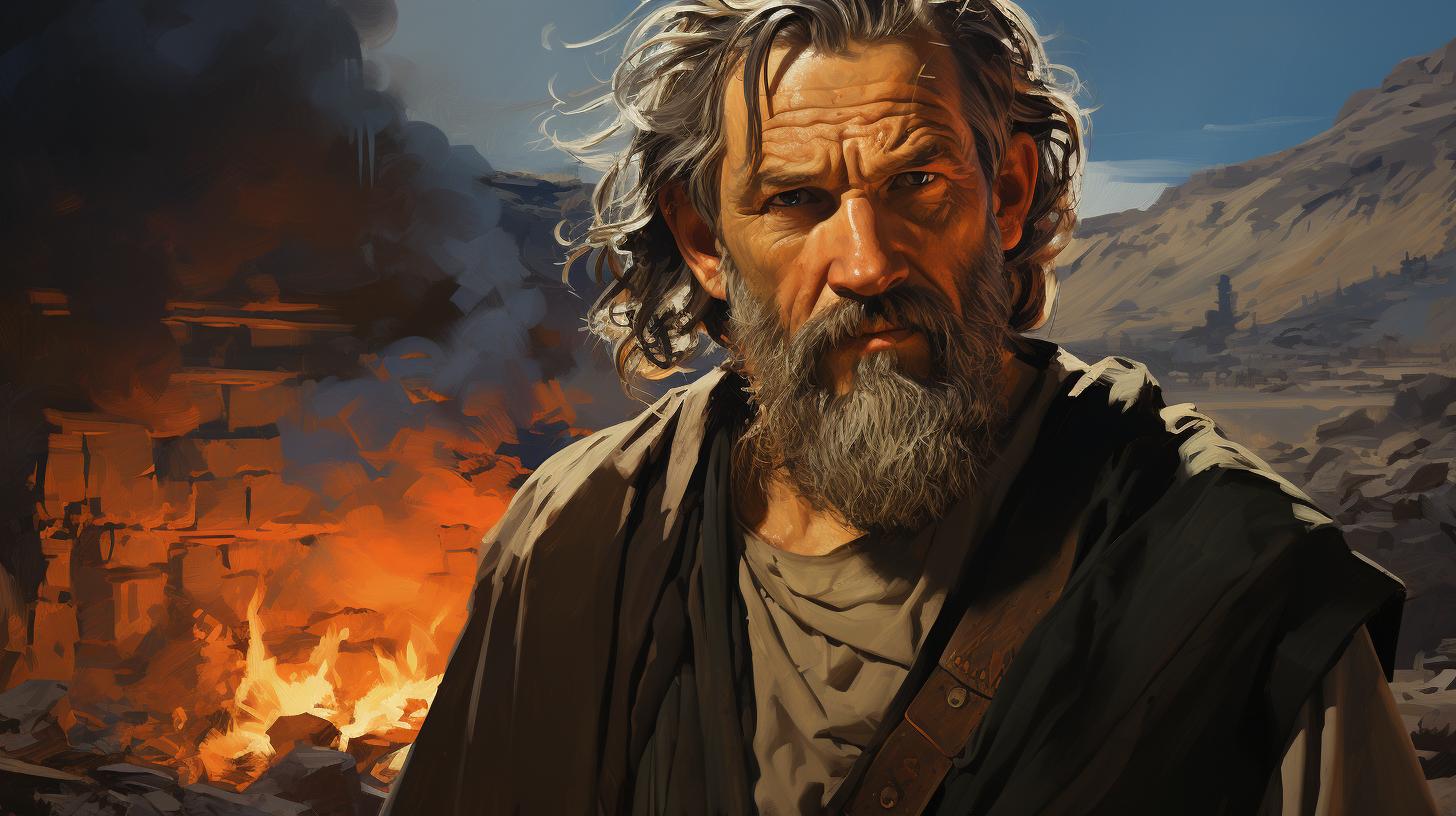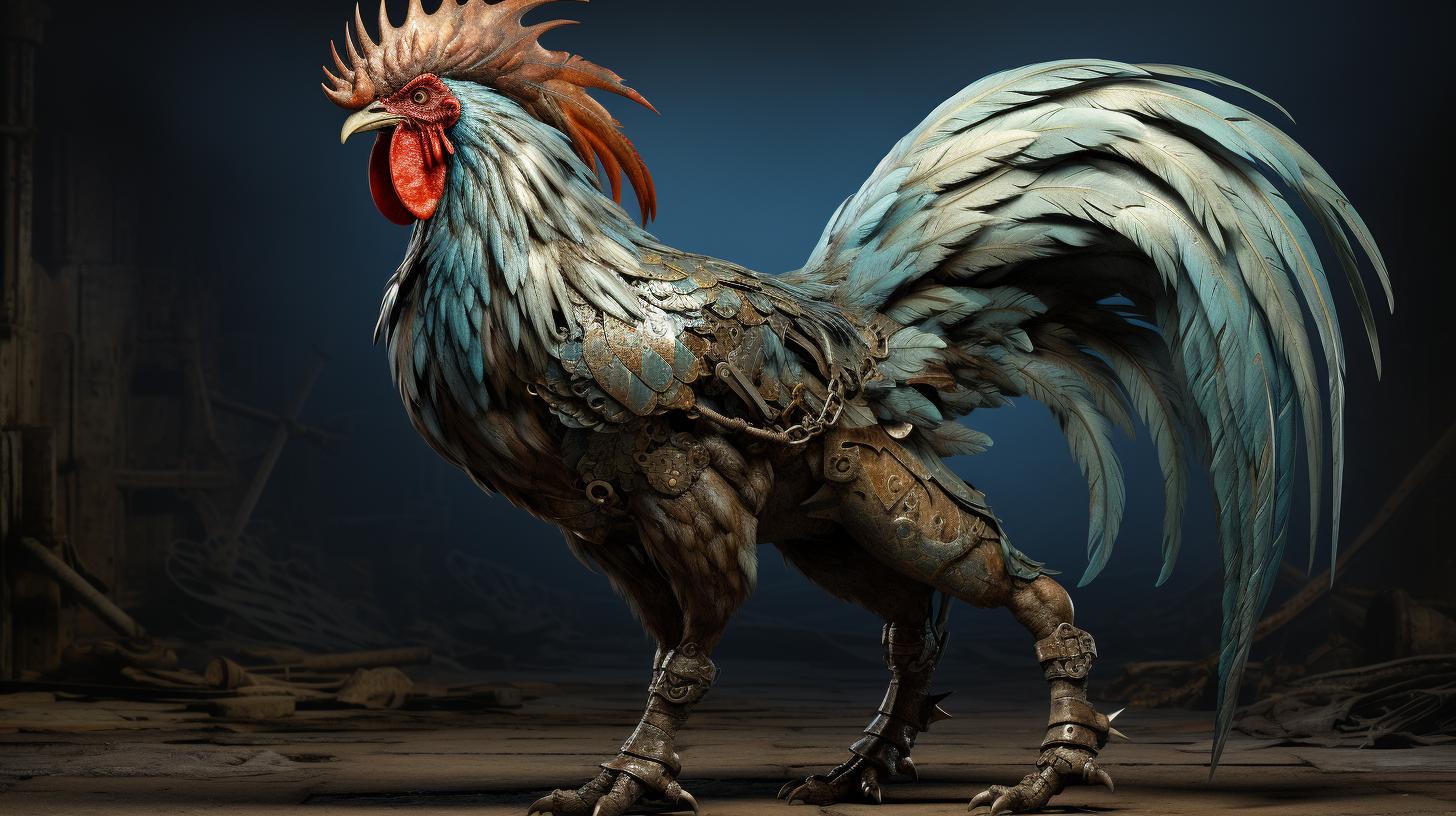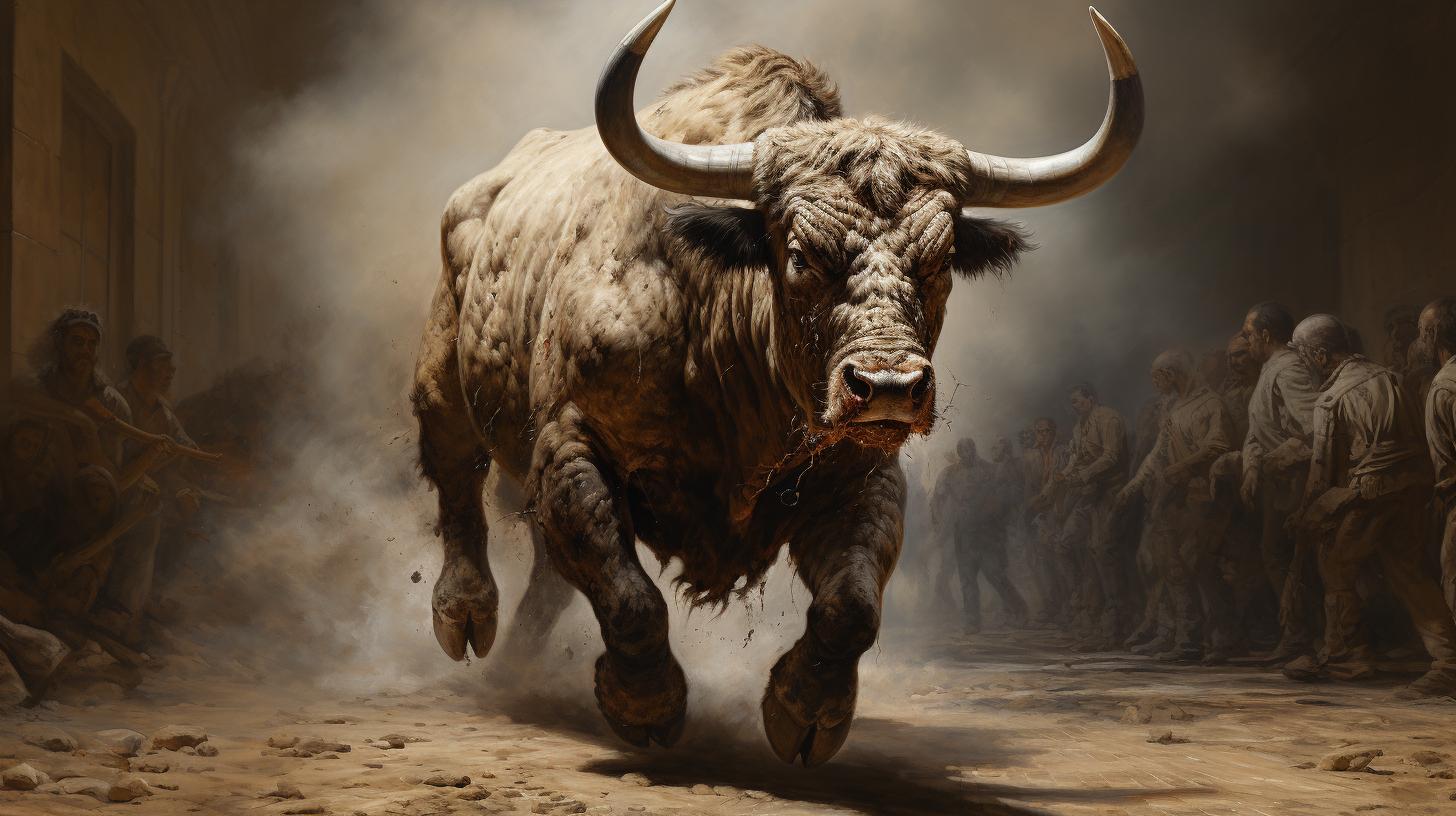Mormo: The Terrifying Female Spirit in Greek Mythology
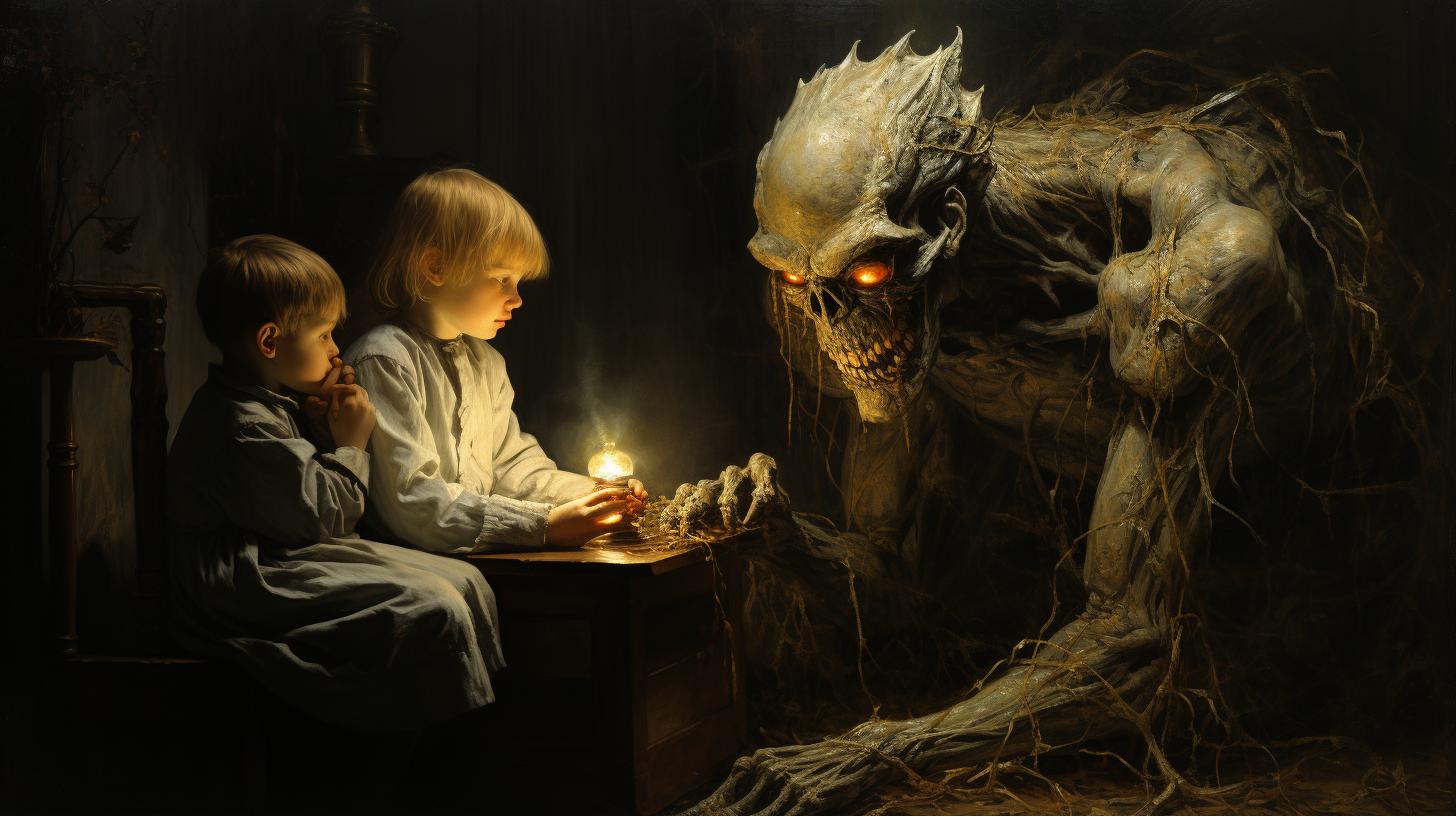
Mormo, a prominent figure in Greek mythology, is a terrifying female spirit associated with fear and horror. Her name, meaning ‘terrible’ in Greek, was used to describe both her and any other terrifying entity.
While Mormo’s description in ancient texts is scarce, she is linked to horses and wolves, suggesting equine characteristics and the ability to shape-shift. Despite her limited presence in ancient mythology, Mormo has left a lasting impact in popular culture, with references in literature, film, and animation.
This article provides an overview of Mormo’s mythology, symbolism, and cultural significance.
Overview of Mormo in Greek Mythology
Mormo, a prominent figure in Greek mythology, is a terrifying female spirit associated with fear and horror. With a name that translates to ‘terrible’ in Greek, Mormo is known to inspire dread in those who encounter her.
While information about Mormo is scarce in ancient writings, she is often linked to horses and wolves, suggesting possible equine attributes and shape-shifting abilities. Descriptions depict Mormo with large ears and a long tongue, emphasizing her ability to transform at will.
Although her presence in ancient mythology is limited, Mormo’s association with fear extends beyond the realm of ancient texts.
The name Mormo is synonymous with the general concept of fear. Additionally, the term ‘Mormolycia’ was used to describe grotesque masks worn in comedic theatrical representations in ancient Greece.
Some accounts mention Mormo as a woman from Corinth who devoured children, including her own and those of others. Another tradition depicts her as the queen of the Laestrygonians, a cannibalistic people.
Despite her minimal presence in ancient mythology, Mormo has left a lasting imprint on popular culture. References to Mormo can be found in H. P. Lovecraft’s short story ‘The Horror of Red Hook,’ as well as in an episode of the animated series Scooby-Doo and the film adaptation of Neil Gaiman’s novel ‘Stardust.’
The Meaning and Symbolism of Mormo
Mormo, a prominent figure in Greek mythology, holds deep meaning and symbolism within ancient Greek culture. As a female spirit associated with fear and terror, Mormo represents the darker aspects of human emotions and the unknown mysteries of the supernatural realm.
Her name, derived from the Greek word for “terrible,” reflects her terrifying nature and the impact she had on those who encountered her presence. Mormo’s association with horses and wolves suggests her ability to shape-shift and adapt, emphasizing her connection to transformation and the duality of human nature.
Mormo’s symbolism goes beyond simple fear and terror. She embodies the concept of caution and warns against the dangers that lurk in the shadows. Her presence serves as a reminder to be mindful of the unexpected and to approach the unknown with reverence and respect.
In ancient Greek folklore, Mormo was often depicted as having large ears and a long tongue, symbolizing her acute perception and ability to communicate and manipulate. Her role as a spirit capable of changing forms highlights the fluidity of identity and serves as a cautionary tale about the dangers of deception and false appearances.
Overall, Mormo’s meaning and symbolism in Greek mythology encompass fear, transformation, caution, and the limitations of human perception. Exploring her role in ancient folklore provides insight into the complexities of human emotions and the long-lasting impact of supernatural beings in Greek culture.
Mormo vs. Lamia: Examining the Distinctions
In Greek mythology, Mormo and Lamia are both female entities associated with fear and terror. While they share some similarities, they have distinct characteristics that set them apart.
- Origin: Mormo is a figure from ancient Greek mythology, often depicted as a phantom or terrifying spirit.
Lamia, on the other hand, is a mythical creature originating from ancient Greek folklore, often described as a monstrous woman with the ability to transform into a creature that preys on children.
- Nature: Mormo is primarily associated with instilling fear and inspiring terror, while Lamia is known for her seductive nature and association with devouring infants.
- Physical Attributes: Mormo’s physical characteristics are somewhat elusive, although representations suggest equine features such as large ears and a long tongue.
Lamia, on the other hand, is often portrayed with the upper body of a beautiful woman and the lower body of a serpent.
- Mythological Connections: Mormo is occasionally associated with Hecate, the goddess of witchcraft and magic.
Lamia, on the other hand, is sometimes linked to the myth of Zeus’ lover, who was transformed into a monster by Zeus’ jealous wife, Hera.
While both Mormo and Lamia evoke fear and horror in Greek mythology, their origins, nature, physical attributes, and mythological connections distinguish them from each other.
The Role of Mormo in Ancient Greek Folklore
In ancient Greek folklore, Mormo played a menacing and feared role. She was often depicted as a female spirit or a creature with the ability to shape-shift, making her a mysterious and unpredictable figure.
Mormo was associated with terror and horror, inspiring fear in both adults and children.
One of the prominent roles attributed to Mormo in ancient Greek folklore was her association with child-devouring.
There were tales of her being a woman from Corinth who indiscriminately consumed children, including her own and those of others. This portrayal added to her terrifying reputation, making her a symbol of maternal dread and unnatural cruelty.
Furthermore, Mormo was sometimes connected to the Laestrigones, a cannibalistic people, suggesting her involvement in their haunting mythology. This association emphasized her connection to the realm of nightmares and the grotesque.
Although Mormo’s presence in ancient Greek folklore was limited, her role left a powerful impression on the collective imagination. Her depiction as a creature capable of changing forms and inspiring terror reflects the ancient Greeks’ fascination with the supernatural and their exploration of the darker aspects of human nature.
Mormo in Aristophanes’ Works: Archanians and Peace
In the comedies of ancient Greek playwright Aristophanes, Mormo’s presence can be observed in the interpretation and portrayal of mythical characters. In the play Archanians, Mormo is mentioned as a representative of fear and intimidation.
The character Dicaeopolis uses Mormo’s name to express his intent to instill fear in his enemies, using her reputation as a terrifying figure to his advantage.
In Aristophanes’ play Peace, Mormo is referenced as a tool of political manipulation.
The character Trygaeus, in an attempt to create harmony and bring peace to Athens, employs the threat of summoning Mormo to scare the politicians into compliance and cooperation.
Through these works, Aristophanes incorporates Mormo’s reputation as a fearsome entity to provide humor and commentary on the political and social climate of ancient Greece.
Mormo’s association with fear and terror is used as a satirical tool to highlight the absurdity and manipulations within society.
Mormo and Hecate: Exploring Connections
In Greek mythology, Mormo and Hecate share intriguing connections that offer insights into their roles and symbolism. While Mormo is often depicted as a terrifying female spirit inspiring fear, Hecate is a powerful goddess associated with witchcraft, magic, and the crossroads.
One of the key connections between Mormo and Hecate lies in their association with dogs. Mormo is linked to wolves, as the Greek term ‘lýkos’ means ‘wolf,’ while Hecate is often depicted with dogs as her loyal companions.
This connection suggests a shared affinity for the animal kingdom.
Furthermore, both Mormo and Hecate are associated with transformations. Mormo is believed to have shape-shifting abilities, while Hecate is known as a triple-formed goddess, representing the maiden, mother, and crone.
This parallel suggests a similarity in their abilities to change and adapt.
In some stories, Mormo is described as a follower of Hecate, invoking her terrifying presence at the goddess’ command.
This association implies a subordinate relationship between the two entities, with Mormo acting as Hecate’s emissary in inducing fear and terror.
While Mormo’s presence in ancient mythology is scarce, her connection to Hecate provides valuable insights into the symbolism and significance of both entities.
By exploring their shared themes of animals, transformations, and subordination, we gain a deeper understanding of the roles they played in ancient Greek culture and belief systems.
The Legendary Creatures: Mormo, Empusa, and Gorgo
In Greek mythology, there are several legendary creatures associated with fear and terror.
One of these creatures is Mormo, a terrifying spirit known for inspiring fear. Mormo is often depicted as a female phantom, capable of changing forms at will. She is associated with horses and wolves, and her name is derived from the Greek word meaning ‘terrible’.
Another legendary creature is Empusa, who is often mentioned alongside Mormo. Empusa is a shape-shifting demon, usually depicted as a beautiful woman with one leg resembling that of a donkey and the other of brass.
She is said to feast on the blood of young men and is known for her ability to seduce her victims.
Gorgo is yet another fearsome creature in Greek mythology.
Often described as a winged woman with snakes for hair, Gorgo is closely associated with her sister Medusa. Gazing into the eyes of Gorgo or her sisters would turn anyone to stone.
These legendary creatures, Mormo, Empusa, and Gorgo, represent the darker side of Greek mythology and embody the primal fears and terrors that have captivated imaginations for centuries.
Mormo in Modern Culture: Literature, Film, and Animation
Mormo, the terrifying female spirit of Greek mythology, continues to captivate audiences through her appearances in various forms of modern media.
Literature has embraced Mormo’s eerie charm, as seen in works such as H. P. Lovecraft’s short story, ‘The Horror of Red Hook,’ where her name is invoked to evoke a sense of dread and supernatural horror.
Film adaptations also incorporate Mormo’s character into their narratives. In the cinematic version of Neil Gaiman’s novel, ‘Stardust,’ Mormo’s association with witchcraft adds an element of intrigue and darkness to the story.
Her presence brings an air of mystery and danger, heightening the tension and suspense.
Not only confined to literature and film, Mormo has even made her mark in the realm of animation.
An episode of the beloved animated series Scooby-Doo features Mormo as a figure associated with witchcraft, unraveling mysteries and adding a touch of supernatural mystique.
Mormo’s enduring presence in modern culture demonstrates her ability to capture the imagination and resonate with audiences across different mediums.
Her associations with fear and horror continue to influence and inspire creative works, providing a chilling element to storytelling in literature, film, and animation.
Common Questions and Misconceptions about Mormo
As Mormo is a lesser-known figure in Greek mythology, there are several common questions and misconceptions surrounding her. Let’s address some of them:
- Is Mormo a goddess? Despite her supernatural qualities, Mormo does not hold the status of a deity in Greek mythology.
She is more commonly depicted as a terrifying spirit or a female creature associated with fear and horror.
- Is Mormo similar to Medusa? While both Mormo and Medusa are female figures associated with fear, they differ in their origins and characteristics.
Mormo is often associated with horses and wolves, while Medusa is known for her snake-like hair and ability to turn people into stone.
- Does Mormo only target children? While there are accounts of Mormo devouring children, including her own and others, she is also linked to the Laestrigones, a cannibalistic tribe.
This suggests a broader range of victims rather than exclusively targeting children.
- Is Mormo the same as Lamia? While Mormo and Lamia are both female entities associated with fear, they are distinct figures in Greek mythology.
Mormo is often connected to horses and wolves, while Lamia is described as a creature with the upper body of a woman and the lower body of a serpent.
- Is there a connection between Mormo and witches? Mormo’s association with fear and horror has led to ties with witchcraft in modern culture.
However, in ancient Greek mythology, there is no direct connection between Mormo and witches.
Exploring these common questions and debunking misconceptions helps to provide a clearer understanding of Mormo and her role in Greek mythology.
Understanding Mormo’s Representation and Transformation Abilities
In Greek mythology, Mormo is not only known for her terrifying nature but also for her exceptional representation and transformation abilities. She possesses the unique power to change her form at will, allowing her to adapt to different situations and deceive her victims.
Through her transformation abilities, Mormo instills fear and uncertainty in those who encounter her. She can take on various forms, including those of animals and humans, making it difficult to recognize her true identity.
This shape-shifting characteristic adds an element of unpredictability and danger to her presence.
Furthermore, Mormo’s representation as a shape-shifter is symbolic of the ever-changing nature of fear itself. Just as fear can take different forms and affect individuals in various ways, Mormo’s ability to transform represents the ever-present threat that can lurk in different guises.
In ancient Greek folk tales, Mormo’s transformation abilities were often associated with her role as a child-devouring monster. She would disguise herself to gain the trust of unsuspecting victims, only to reveal her terrifying true form when it was too late.
Overall, understanding Mormo’s representation and transformation abilities is crucial in comprehending the depth and complexity of her character in Greek mythology. Her shape-shifting nature serves as a constant reminder of the multi-faceted and unpredictable nature of fear, making her a formidable and unforgettable figure in ancient folklore.
Mormo’s Significance and Influence in Ancient Greece
Mormo’s presence in ancient Greek mythology holds significant meaning and influence within the culture of that time. As a terrifying female spirit associated with fear and horror, Mormo represented the deep-seated fears and anxieties of the ancient Greeks.
Her association with horses and wolves, along with her shape-shifting abilities, added to her mystique and symbolic power. In ancient Greek folklore, she served as a cautionary tale against wickedness and an embodiment of the consequences of transgressions.
Mormo’s influence extended beyond the realm of mythology into everyday life. Her name become synonymous with fear itself, instilling terror in the hearts of both children and adults alike. The mention of Mormo’s name alone was enough to evoke feelings of trepidation and unease.
Furthermore, Mormo’s presence in ancient Greek literature, such as in the works of Aristophanes, emphasized her role as a representation of the grotesque and the supernatural. Her association with other legendary creatures like Empusa and Gorgo further showcased her significance in the pantheon of mythical beings.
Overall, Mormo’s significance lies in her ability to give shape to the fears and nightmares of ancient Greek society. Through her representation and influence, she served as a constant reminder of the consequences of wickedness and the ever-constant presence of fear.
Comparative Analysis: Mormo in Greek and Roman Mythology
When comparing Mormo in Greek and Roman mythology, it is essential to highlight the similarities and differences between the two traditions. In Greek mythology, Mormo is depicted as a terrifying female spirit associated with fear and horror.
Notably, she is often connected to horses and wolves, suggesting shape-shifting abilities. However, in Roman mythology, there is a similar entity known as Lamia. While both Mormo and Lamia are associated with fear and have monstrous characteristics, there are distinct differences in their appearances and origins.
Mormo is typically depicted as a female spirit with equine features such as large ears and a long tongue. Lamia, on the other hand, is portrayed as a half-human and half-serpent creature.
This divergence in physicality highlights the variation between Greek and Roman interpretations of similar mythical entities. Additionally, their origins differ as Mormo is primarily connected to Greek folklore, while Lamia has her origins in Roman literature with references in the works of authors like Horace and Ovid.
Despite these disparities, both Mormo and Lamia exemplify the universal fear of the unknown, showcasing the cultural significance of these mythological figures in ancient Greek and Roman societies.
By engaging in a comparative analysis, we gain a deeper understanding of the complexities and nuances within Greek and Roman mythology, recognizing the diverse interpretations of similar mythological entities across different cultures and time periods.
.











